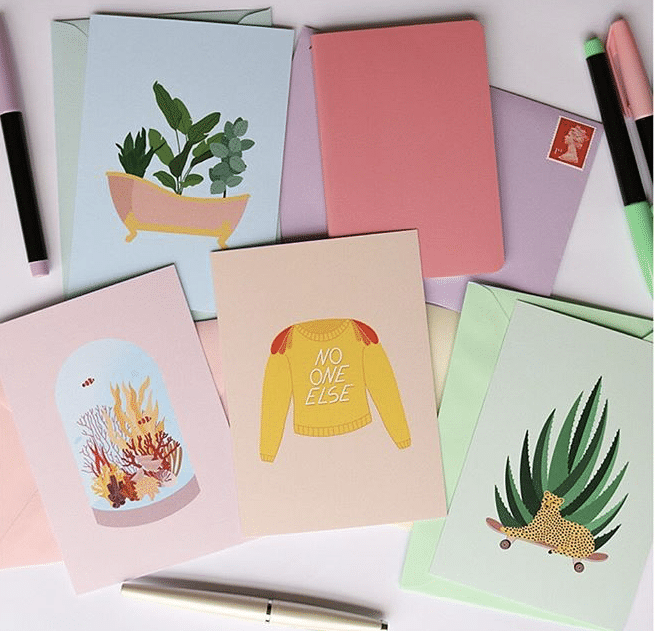Finding ways to keep yourself occupied during the lockdown can be tricky, you might have a creative urge to make or do something but not sure how or where to start. Have you considered making your own greetings cards?

In the UK, we spend £14 billion a year on greetings cards. It’s a huge industry that continues to grow. Some people have used the lockdown as an opportunity to start designing and making their own cards, so we have come up with some guidance to help get you started.
1. Do all the research
If you’re wanting to sell your cards, then you need to research what kind of cards your potential customers might want. Look at the latest graphic design trends and see if you can reflect the trends in your designs, but while still retaining your personal spin on the theme.
Think about anything that hasn’t been covered, such as quotes from the latest popular TV shows that could make great puns, or look at the latest news and current events to see if something could lend itself to a design.
2. Choose your card
The standard greetings card size is A5, but don’t feel you have to stick to that. Smaller A6 cards are also popular. Maybe experiment with something different, such as square cards. Also, consider the available envelope shapes and sizes to ensure they can be posted.
There is a massive uptake in environmentally friendly cards made out of recycled cardboard, and uncoated cards mean they can be recycled again once the occasion is over.
3. Pick complementary colours
It’s important to choose a colour scheme that complements each other, as well as choosing a scheme that suits the occasion.
Christmas cards are generally green and red, but sometimes with icy blues. There’s a much wider choice of colours to play with for birthday cards, and bright colours are ideal for a happy occasion. Floral designs and colours are perfect for wedding cards.
4. Find a font
Your chosen font is very important for setting the tone of your card. Certain fonts can imply certain things, so it is vital to find the right one to suit the character of the design.
Cursive fonts that look like handwriting are ideal for weddings, sympathy, birthdays for elderly relatives, or any other card that needs a personal, handwritten look, adding an elegant and more serious tone.
Funny and quirky cards typically make use of simple capital letters, or newspaper-style fonts such as Helvetica or Times New Roman, and cards for children work best with bold and clear fonts, especially for those still learning to read.
5. Write the perfect message
The message inside the card is often the entire point, whether it’s a heartfelt Mother’s Day message or the punchline to the joke you started on the cover. It can be tricky to find the right words, especially if it’s not your strong suit, but there are plenty of ideas and inspiration on sites such as Pinterest to help!
The final part is to get them printed! If you need custom greeting card printing, then get in touch today!
Looking for a reliable printing company?
Get an instant quote